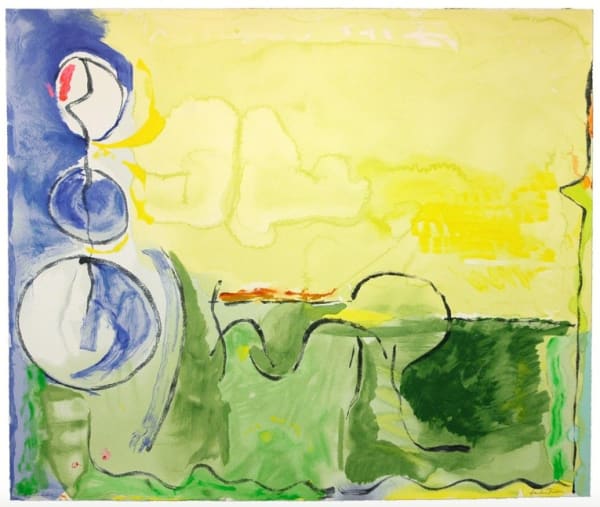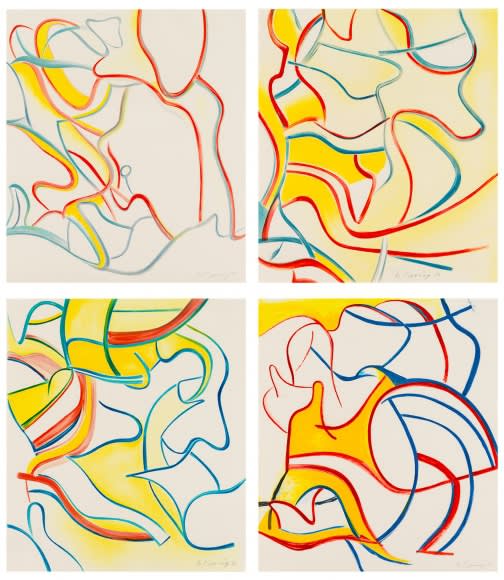-

-
“As we look back from the middle of the twentieth century all that kind of talk and opinion seems very silly, for it has become obvious that what makes a medium artistically important is not any quality of the medium itself but the qualities of mind and hand that its users bring to it … I have sometimes wondered whether there is any field of art collecting which is more hidebound and hamstrung by arbitrary definitions than that of prints.”
Williams Ivins, Prints and Visual Communications
These remarks by the fabled Metropolitan Museum of Art curator were to be borne out in the adventurous prints of American artists working in the wake of Abstract Expressionism, as well as their subsequent generational peers, decades later. The full range of its styles and ideas appears in the execution of original prints, some created by the progenitors of the movement. Following Stanley Hayter’s influential Atelier 17 move to New York from Paris, pioneering print studios emerged in the late 1950s and 1960s, among them, Tamarind Lithography Workshop, Tatyana Grosman’s United Limited Art Editions, Hollanders Workshop, and later Gemini G.E.L and Tyler Graphics, establishing collaborative practices introducing these artists to unlimited freedom and experimentation with innovative image making.
With various traditional media at their disposal, artists employed different printmaking techniques including intaglio, relief and lithography, often combining them for the results desired. Many Abstract Expressionists found that printmaking could allow not only gestural, but emotional and psychological directness, and that a copper plate or lithography stone could record the momentary creative impulse. They discovered, too, that the printmaking discipline has its own vernacular and look, and its own creative pace and rhythm.
Magnificent and lasting printed editions were made by Richard Diebenkorn, Willem de Kooning, Sam Francis, Helen Frankenthaler, Adolph Gottlieb, Philip Guston, Grace Hartigan, Alexander Liberman, Joan Mitchell, Robert Motherwell, Barnett Newman, Jackson Pollock, Esteban Vicente, and Adja Yunkers.
Their uninformed experiences sometimes caused fortuitous accidents and pointed to new directions of creative production. As in painting, Abstract Expressionist artists who made prints were compelled to find distinctive imagery and techniques to reflect their own ingenuity and personalities. This urge reinvigorated the spirit of innovation that had long characterized American printmaking and expanded its boundaries in ways still admired and felt today.
-
-

Sam Francis, Meteorite, 1986
-

Helen Frankenthaler, Tales of Genji I, 1998
-

Helen Frankenthaler, Flotilla, 2006
-

Helen Frankenthaler, Divertimento, 1983
-

Willem de Kooning, Quatre Lithographies, 1986
-

Willem de Kooning, Seventeen Lithographs for Frank O'Hara: One plate, 1988
-

Joan Mitchell, Flower III, 1981
-

Alexander Liberman, Untitled, 1965
-

Philip Guston, Pile Up, 1983
-

Philip Guston, Sky, 1983
-

Robert Motherwell, Alberti Elegy, 1982
-

Robert Motherwell, Put out all flags, 1980
-
Abstract Expressionism: A Conversation
Past viewing_room












